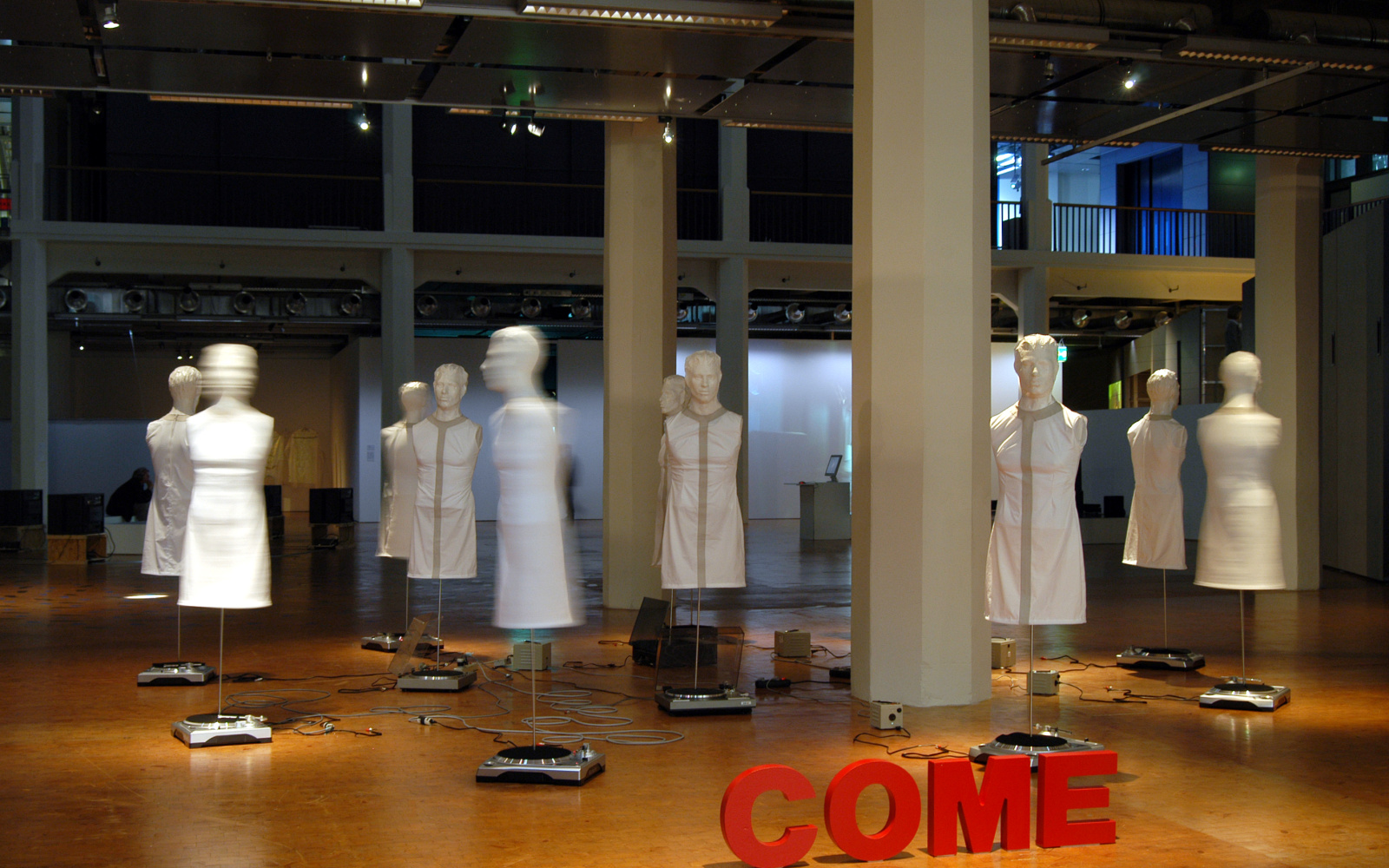- Exhibition
Call me Istanbul is my Name
Sun, April 18 – Sun, August 08, 2004
- Location
- ZKM | Media Museum, ground floor
Byzantium. Constantinople. Istanbul. The discontinuities and transformations of Istanbul are more than name-deep. They have everything to do with the historic foundation and contemporary character of a city which was an imperial capital for more than fifteen hundred years, but which never conformed to the Western ideal that urban form should have the precise elegance of a Euclidean theorem. No codified laws or perfect lines of a master plan could produce the vital neighborhood miracles of Kasimpasa or Tarlabasi. Istanbul flies in the face of all prescriptions, turning excess, accident and chaos into an art form. Although she is famous for her monuments and public spaces, these are not her only faces. There are other worlds beneath her surface and before her towers-- streets of intimate scale, shadows hiding avatars, zones of chance, doors of deviation. These nighttime cuts and hidden folds have as much to do with shaping Istanbul’s urban fabric as daytime plans and sunlit wholes. This exhibition acknowledges many unexpected sources that infiltrate and subvert the senses. Where the visible and invisible, luxurious and decrepit, past and future leak across the time/space membrane, they defy curatorial classification. Where sight is not exclusive, but senses blend, art installs itself in arresting combinations, linking and provoking the body and the head.
As much as Istanbul is a city of ancient icons and ocularcentricity, it is also a city of audition - of impermanent sounds and acoustic activity. This exhibition gives some of Istanbul’s mobile sounds a critical hearing in Karlsruhe. In the exhibition hall, as in the city’s immense urban space, discontinuous events proliferate. Material fluctuates. Sounds drain substance. Sights, smells, textures, and voices mingle the animal, the mechanical and the human.
Come whoever you are. Istanbul calls
Long before Rem Koolhaas »read« New York, Istanbul wrote »delirious« into the script of the urban imaginary. “What protects us against delirium or hallucinations are not our critical powers but the structure of our space”, Merleau-Ponty wrote. In the case of Istanbul, there is no protection. Delirium is order.
The image of Istanbul is never far from the issue of architecture. Its gates, mosques, palaces and walls have attracted visitors from all lands; its harems and minarets have been depicted in paintings and engravings for centuries, while today its shantytowns and transient houses raise important questions about migration and displacement. This exhibition is never far from architecture either. Not in the sense that it presents models of the Hagia Sophia or proposals for Taksim Square, but in the sense that it reveals some of the ways that design has functioned in Istanbul despite architecture - as a kind of creative process that finds solutions in flaws - an almost genetic force that addresses problems at the level of human need, outside of systems. Trash collection succeeds as street negotiation; spaces are organized and time is measured by prayer calls; neighborhoods and communities are built out of discontinuities and contradictions. In Istanbul, aberrational forms of architecture function better than »real« architecture, and one of the city’s great strengths is that it always finds ways to make the dysfunctional functional.
Istanbul is a city where the future, in some sense, could always be read. When Rome was the site of imperial power, Istanbul would become the next seat of the Roman Empire. In the age of nation capitals, Istanbul was a world city. And now, in the age of global cities, Istanbul is becoming something else - a new city-territory, previewing the condition of non-linear norms and matrix developments yet to come. This exhibition is witness to the rich dialogue now taking place between the new urban agglomeration that is Istanbul and the architects, artists, urbanists, designers, and researchers who are thinking, working, and playing within that space. In their studios and laboratories, the raw materials of urban space are being stretched and molded into ideas, images, information, sounds, installations, and texts through a combination of old craft and new technology, aided by the survival instincts, stress tolerances, and edgy confidence which defines Istanbul’s global style. When we began working on this exhibition, we imagined it as an interface mediating between the surface features and deeper structures of the city. Over time, we came to see it as a crossable diaphragm between space and time, a sort of transparent screen between Istanbul present and Europe future. You can also think of this exhibition space as a fault or fissure—where you feel yourself suspended for a moment in the gap, interval, riss- - stretched between present and future, Istanbul and Karlsruhe, Turkey and Europe.
We call you Istanbul, but what will you become?
It is a question not only for the future of Istanbul, but for the future of Europe, as non-native citizens, class collisions, information technology, illegal aliens, black markets, real estate irregularities, housing shortages, labor challenges, suicide bombings, business ventures and market pressures increasingly define the way people organize and imagine urban landscapes. If Istanbul is a model for the future multi-cities of Europe, we need to understand the elastic and vibrant system that defines Istanbul now. This exhibition offers an encounter with some signals coming from that metapolis.
Roger Conover
Event Website
Imprint
- Curator
- Curator
- Curator
Team
Martin Häberle (technical project management)
Sabine Himmelsbach (project management)
